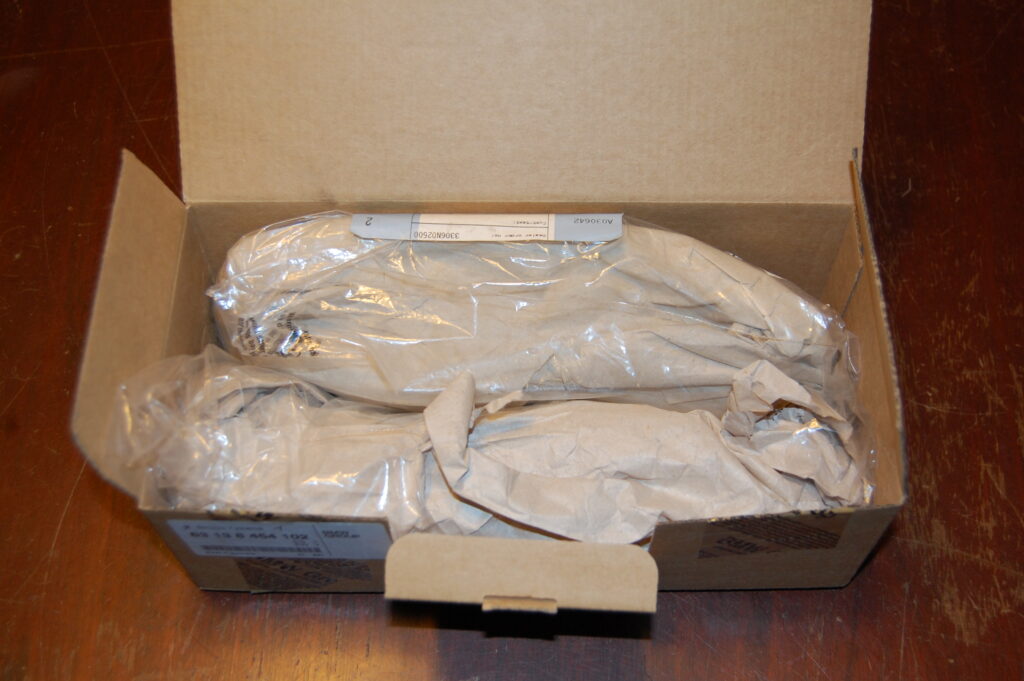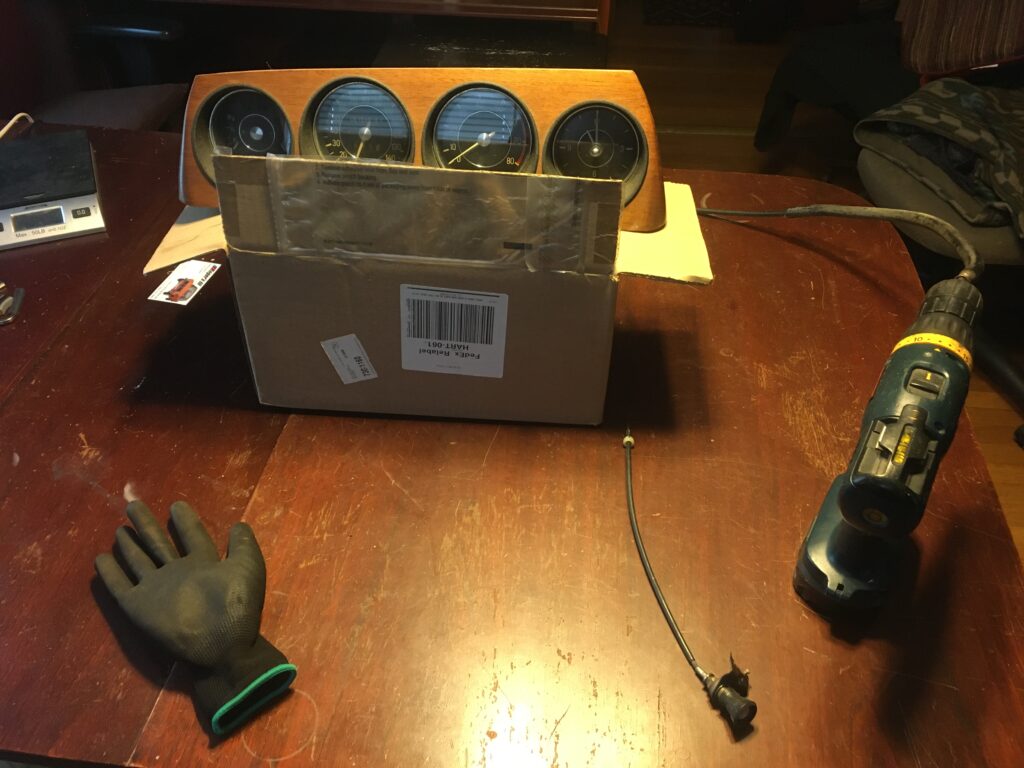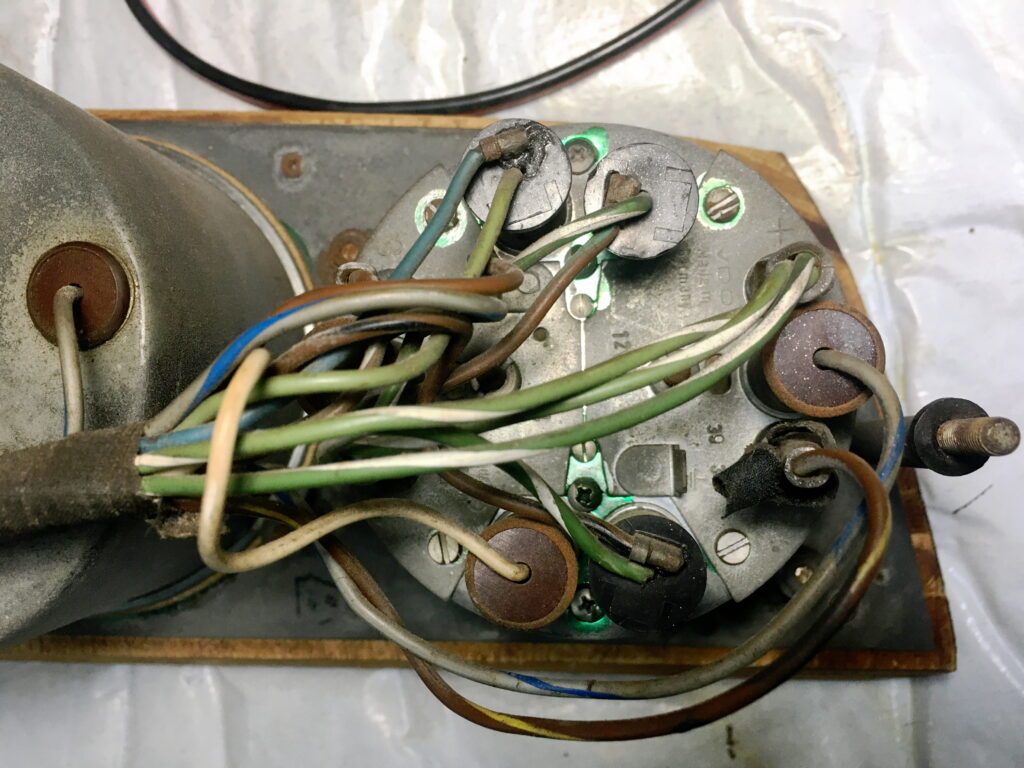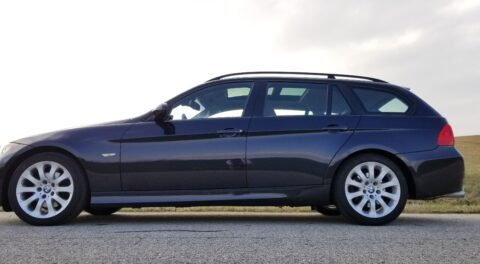As those of you who’ve been reading me for decades know, my other passion in addition to the cars (and of course my unending passion for my wonderful and delicious wife) is performing songwriting, and along with this comes the same never-ending desire for more guitars that plagues the car world. Guitar players call it Guitar Acquisition Syndrome (“GAS”). For many years, by coincidence, the number of cars and guitars have roughly paced each other, climbing up into double digits together, and both stabilizing at around thirteen. As with cars, you can build a case that the different guitars are for different things, and sometimes they are, but also sometimes you just stumble into something that really lights your fire. (And now you know that they both involve “GAS.”)
Such was the case in the past month. Not one but two guitars spoke to me in that special guitar way. The first was a Guild D40, which was my first real guitar. There’s a song about it on my 3rd CD you can find here. The D40 I just bought is an earlier one, lighter and far more responsive. It was owned by a friend. I’d played it eight years ago, loved it, and was surprised to see him offering it for sale on Facebook. I went over to his house, played it again, still loved it, and snatched it up. It’s now the guitar that I leave out on the stand, there so I can grab it and play it instead of having to pull something pampered out of its case. Sort of the “daily driver” of the bunch. See? I told you there were analogies.
The second purchase was less defensible. Another friend had a Northwood (a boutique Canadian manufacturer) with Madagascar rosewood sides and back. It’s one of those high-end guitars that sounds like a grand piano. The asking price was about a third of what a new one would cost, but still expensive, about the price of a running E39 530i stick. It was frivolous, but deep connection with instruments is actually not all that common, so I caved.
So, with not one but two guitar-shaped holes in my bank account, I set about to try to right the financial ship of Siegel by selling some Grade A car parts and trying to fool myself that this was all a zero-sum transaction.
All of the parts had history, but two of them were from a hoard I was gifted. About a decade ago I met a local guy who had gotten big into cars somewhat late in life. Mike started with vintage Corvettes, then moved into Porsches, then Ferraris, then went on a spree buying a variety of 1970s European cars in the $10,000 to $20,000 range, including BMW 2002s. I helped him buy two tiis. Both cars came with a bunch of parts, and he bought additional dress-up items for them that never got installed. When his tastes changed, I helped him sell both cars. I wrote about the sale of the second one on Bring a Trailer here. Last fall, as he and his wife prepared to sell their house and its Garage Mahal, he contacted me and asked me if I wanted to take his 2002 parts hoard. At that point, I still had the Silverado 3500 truck with the utility body, so my son Ethan and I drove over there and loaded everything up.
I’ve written multiple pieces about how, when you inherit someone’s parts hoard, hopefully you find one or two things that you instantly recognize as valuable and easy to ship, because most everything else is neither. Sure enough, I noticed that in one crate was a box labeled “Flat Euro turn signals.” Inside were a pair of new-in-the-bags flush front directionals that folks go ga-ga over, along with the receipt for $600 for the pair from Rogers tii when they were purchased in 2014. I told Mike that he could sell these tomorrow for what he paid for them. To my surprise he said “This is my gift to you for clearing this stuff out of my garage.” I thanked him for his generosity.

Yup, new in bags.

MMMMmint.
So, when I thought about raising funds to fund the guitars, my mind instantly vectored to the flush turn signals. I searched online and found that one of them was now listed as NLA, so although the price at Rogers tii and other places had increased to $630/pair, you couldn’t click and buy them. BluntTech has reproductions for $425 plus shipping for the pair, but they say right on their website that they don’t have the raised lettering on the lenses that the genuine article has. I posted mine on two Facebook groups for BMW 2002 parts for $600 shipped. In five minutes I had three people who wanted them. The second one Venmo’d me the money instantly, and they were gone, which was the goal.
Next was another article from Mike’s hoard—a set of chrome front grills from a 1600 or early 2002 (the grills on most round tail light cars have alternating chrome-and-black slats). These were not new, but were in good original survivor condition with no cracks or welds. I looked at what folks were selling these for on eBay, and priced them at $330 shipped for the pair. They sold in about half an hour. Packing them was more challenging than I thought, as to avoid the shipping price spiking with increasing package size, I had to cut and bend a large piece of cardboard to make an 11″ x 11″ x 28″ box.

Not mint or excellent, but in lovely survivor condition.
The last item was the most interesting. In 1986, shortly after I bought the ’73 3.0CSi that I still own, I bought a wrecked rusty 2800CS and stripped it for parts. This was the source of the E9 front subframe I wrote about having to dispose of when my sister and I readied our mother’s house for sale last spring. Other than small items like light switches and door handles, the last item remaining from the car is the wood-grained instrument cluster. During my software engineering years when a twenty-inch CRT monitor was the size of a shelf, I had it in my office as a nifty accent piece, but for the decades after it had been in the basement.

Me (left), a colleague (right), and the E9’s instrument cluster.
I pulled it out, photographed it, did the due diligence necessary to list it, and found one on eBay with an asking price for $1,300 and a description saying that the gauges had been “verified for proper working order,” and a no-return policy. There were two other ones on eBay in Germany for $750 with no discussion of whether they worked or not, and returns allowed but impractical. I thought that if I verified the functionality of the instruments, priced it at $750 with returns allowed, it would continue my rapid-list-and-sell streak.

The wood-grained cluster looks lovely both in and out of the car.
Now, to test a 2002 cluster, you simply swap it into another 2002 and drive the car. It’s trivial because the cluster can be removed by pulling a few under-dash panels, reaching up from behind, twisting off the collar nut for the speedometer cable and two knurled fasteners holding the cluster itself, sliding the cluster partially out from the front, then reaching in and unplugging the round multi-pin connector and the tach wire. It takes ten minutes tops. But on the E9, pulling the whole cluster is nearly impossible with the windshield installed. I visited this issue years back when I needed to repair the odometer in my 3.0CSi. The fact that I had the spare intact cluster was physical testimony that I had pulled it out, but the more I thought about it, the more it was likely that, since I was parting out the car, I probably pulled the windshield first, then lifted the cowl off from above the cluster. The odometer repair in my CSi was accomplished by pulling the wires off the back of the individual speedometer gauge, unscrewing the fasteners holding it to the back of the cluster, and lifting it out from the front. I wasn’t going to swap individual gauges in and out of my CSi this way if the only goal was testing them for resale.
But then I realized that it wasn’t that hard to bench-test the cluster. The speedo was the easiest one, as it can simply be spun with a drill. I found a spare speedo cable and hooked it up. A quick text to Jeff Caplan at OdometerGears.com confirmed that the drill must be spun in the reverse direction to mimic the transmission.

The dining room table is a bench-top, right?

Zoom zoom!
Next, I moved on to the other gauges, which are electric instruments. The clock was the most straightforward to test, as it required just 12V and ground. I could’ve rigged something up at the dining room table I mean bench-top, but it was easiest to just set up shop under the hood of the E9, as testing the tach was next. I have a set of troubleshooting cables I take with me every time I go on a road trip. They have battery clips at one end and female spades at the other. I put a big piece of foam padding on the E9’s fender, set the cluster on it, and connected things up. Unfortunately, the clock didn’t work. I then had a flashback of removing the one in this very car via the same arthroscopic procedure as the speedo, and repairing it by replacing a capacitor. Still, if one instrument doesn’t work on a cluster you’re trying to sell, the clock is a good one.

Trivial to test, but dead. The positive spade connector is clearly visible. The negative one is in the shadow.
Next was the tach. For this, I supplied power and ground from the E9’s battery, and signal from the “1” or “-” side of the E9’s coil. I started the car, and the tach in the spare cluster reported RPM for the first time since Chernobyl exploded.

Power, ground, and signal supplied to the back of the tach.

WHEEEEEE!
That left the compound instrument with the fuel and temperature gauges and high beam, brake, oil pressure, and battery warning lights. The lights themselves are simply bulbs with wires running to multi-pin connectors and required no special testing, but the gauges initially appeared challenging.

How do you tell what’s what without a wiring diagram?
You might think you need a wiring diagram to be able to make sense of the above photo, but really, you don’t. The trick is to look at where the individual elements are on the front of the gauge, then mirror it on the back. If the gas gauge is on the left side of the front, then it’s on the right side of the back. The fact that it has three green and white wires running to that general area means that that’s the shared 12V power source (the little “+” on the back of the case helps as well). The big round thing is clearly the bulb. That means that the single-wire spade connector is the signal from the sender. Ground is actually the case itself, which is grounded to the chassis of the car via a wire through the multi-pin connector. So, send it power and ground, and the only other thing you need is signal from the sender.

There you go.
But how do you get signal? You could stretch a wire from the sender at the top of the gas tank if you really wanted, but it’s not necessary. Instruments like the gas and temperature gauge respond to a variable resistance between them and ground. If there’s infinite resistance—no ground connection—they read zero. If there’s low resistance—some connection to ground, typically in the tens or hundreds or thousands of ohms—they read full. So all you need to do to test if the gauge is functional is to jumper the signal terminal to ground. I did this for both the fuel and temperature gauges, and they both pegged, as they should.

Booya!
Above, I said that there was no real reason to test the indicator lights, but it occurred to me that powering the night lights for the cluster would make a nice pic, and, from a marketing standpoint, would be an effective reinforcement to the claim of a working cluster. For this task, since the bulbs are fed a common signal, I just traced the gray-and-blue wire up to the multi-pin connector and fed it power there.

It’s an E9 cluster Christmas!
The final task was documenting the issue of which differential the speedo in this cluster is calibrated for. This took a bit of sleuthing. While I was certain the cluster came from a 2800CS, and was virtually certain the car had a ZF four-speed (I remember the gearbox and its odd non-Getrag-like oiled shifter sitting under my mother’s front porch for 30 years), I didn’t want to be wrong about it. I pored over e9coupe.com and eventually found documentation that there’s an arcane code on the back of the speedo that maps to a diff ratio. According to forum poster HB Chris,
“I’m going to make an educated guess from looking at the parts books:
W=0.679 kmh on CSi and CSL is for the 3.25 differential
W=0.7125 kmh euro CS and CSA is the 3.45
W=1.078 mph euro CS and CSA is the 3.25
W=1.14 mph US/NA CS and CSA is the 3.45
W=1.2164 mph US/NA CS and CSA is the 3.64”
Mine was stamped as “W1.1.” Knowing that, I could list the cluster as having a speedometer calibrated for a 3.45 rear end. A buyer could have it recalibrated for a different ratio by sending it to a speedometer shop.

W1.1 = 3.45 it is.
And with that, I had the photos and documentation to list it. I posted the cluster on e9coupe.com and on two Facebook E9 pages for $750 shipped. I quickly got a serious bite from a fellow who restores these clusters to like-new condition, but the deal hasn’t been closed, so if you want it, you can still contact me here.
So, I’m still in the hole for the guitars. But hey, they occupy a lot less space then the cars. And are a lot less greasy. And most of the time, they sound better too.
—Rob Siegel
____________________________________
Rob’s newest book, The Best of The Hack Mechanic, is available here on Amazon, as are his seven other books. Signed copies can be ordered directly from Rob here.





















